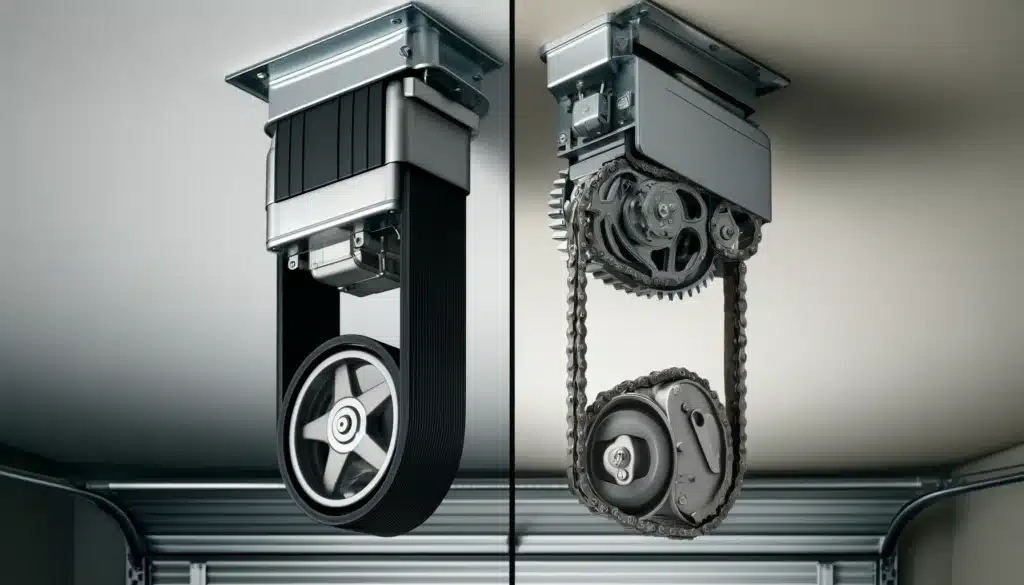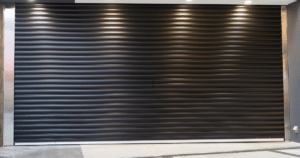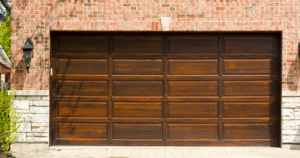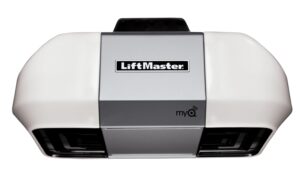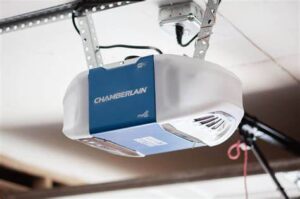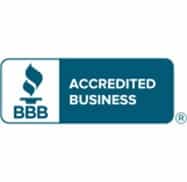Did you know that the average American opens and closes their garage door about 1,500 times per year? That’s a lot of wear and tear on this essential piece of household equipment. When you’re deciding between a belt drive vs chain drive garage door opener, it’s crucial to understand the impact of your choice. This decision affects not just the performance and noise level of your garage door, but also its long-term reliability and maintenance needs.
Belt drive vs. chain drive garage door opener is about finding what best suits your home. Do you want something quiet, or something that lasts long and works hard?
Our goal? To clearly lay out the differences between these two types of openers. We want to give you all the info you need to pick the best one for your home, considering what’s most important to you—whether that’s cost, quietness, or durability. Let’s explore which type of garage door opener—belt drive vs. chain drive—is the ideal match for your home’s garage.
Belt Drive Garage Door Openers
Belt drive garage door openers offer a modern, efficient solution for automating garage doors, blending convenience with quiet operation. Understanding how these systems work and their standout features can help homeowners make informed decisions when upgrading their garage door mechanisms.
How Belt Drive Garage Door Openers Work
A belt drive garage door opener uses a belt to open and close the garage door. It has an electric motor, a belt, and some pulleys. When activated, the motor moves the belt, which then pulls the garage door up or lowers it down along the tracks with minimal noise and vibration. The belt is connected to the garage door, so it can pull the door up or let it down smoothly. This type of opener is quieter and moves more smoothly compared to other types of openers.
Key Features of Belt Drive Garage Door Openers
The appeal of belt drive garage door openers lies in their key features, notably their quiet operation, smoothness, and reliability.
- Quiet Operation: Unlike chain-driven models that can produce a significant amount of noise, belt drive openers operate almost silently. This makes them ideal for homes with living spaces above or adjacent to the garage, as they minimize disturbance from garage door movements.
- Smoothness: The smooth operation of belt drive systems is a result of the belt’s flexibility and the precise control offered by the electric motor. This ensures that the door opens and closes gently, reducing wear and tear on the door and opener over time.
- Reliability: Modern belt drive garage door openers are built for longevity. They are less likely to experience the jerks and jolts that can occur with chain-driven systems, leading to a more reliable operation cycle over the opener’s lifespan.
Materials Used in Belt Drive Garage Door Openers
Belt drive garage door openers are popular for their smooth operation and quiet performance compared to chain-drive systems. These systems use a belt, instead of a chain, to move the garage door up and down. The materials used in these belts are crucial for the durability and efficiency of the garage door opener. Here’s a breakdown of the common materials used in belt drive garage door openers:
1. Reinforced Rubber
Reinforced rubber belts are commonly used in many belt drive garage door openers. This type of belt is made from strong, flexible rubber that is reinforced with fibers to increase its strength and durability. The fibers could be made of materials such as polyester, nylon, or steel, providing the necessary tension resistance without sacrificing flexibility.
2. Polyurethane
Polyurethane belts are another popular option. Polyurethane is a type of polymer that’s known for its flexibility, strength, and resistance to abrasion, tearing and various chemicals. Belts made from polyurethane are often quieter and have a smoother operation than those made from other materials. They are also resistant to weather changes, making them suitable for garages in areas with extreme temperatures.
3. Fiberglass
Fiberglass is sometimes used as the reinforcement material within the belt. It provides excellent tensile strength, ensuring the belt remains intact and operational under the stress of lifting and lowering the garage door. Fiberglass-reinforced belts are known for their durability and resistance to stretching over time.
Choosing the right materials for your garage door opener means it will last longer and need less upkeep. Belt drive systems are easier to take care of than chain drives because they don’t need as much oiling and don’t wear out as quickly. This means they work quietly and smoothly for a more extended time without needing a lot of maintenance.
Chain Drive Garage Door Openers
When considering the various types of garage door openers available, chain drive models stand out for their durability, cost-effectiveness, and straightforward mechanism of operation. These systems utilize a metal chain to move the garage door up and down, similar to how a bicycle chain moves along its sprockets. This simplicity in design contributes significantly to the overall reliability and longevity of chain drive openers, making them a preferred choice for many homeowners.
How Chain Drive Garage Door Openers Work
A chain drive garage door opener is a motorized device that opens and closes garage doors with the assistance of a metal chain. The chain is attached to a trolley, which is connected to the garage door. When activated, the motor drives the chain, pulling the trolley and, consequently, the garage door up or pushing it down. This mechanism is both practical and efficient, providing a straightforward solution to automated garage door operation.
Key Features of Chain Drive Garage Door Openers
One of the most compelling advantages of chain drive garage door openers is their cost-effectiveness. Compared to belt-driven and screw-driven alternatives, chain drive models often come with a lower price tag, making them an attractive option for homeowners looking to maximize value without sacrificing quality. Additionally, their robust design ensures that they can handle heavy and frequently used doors with ease, further enhancing their appeal to those seeking reliability and durability.
The inherent strength of the metal chain also means that chain drive openers are less likely to slip or lose grip, ensuring consistent performance over time. This reliability is a significant strength, especially in areas where garage doors are subjected to heavy use or adverse weather conditions.
Materials and Design Features of Chain Drive Garage Door Openers
The materials and design of chain drive garage door openers are pivotal in their longevity. The use of high-quality metals in the chain and other critical components helps resist wear and tear, contributing to the system’s overall durability. Regular maintenance, such as lubricating the chain and checking for any signs of damage, can further extend the life of the opener.
However, it’s worth noting that the metal-to-metal contact inherent in the design of chain drive openers can result in higher noise levels compared to belt-driven models. This potential noise factor is something homeowners may need to consider, especially if the garage is adjacent to living spaces. Innovations in materials and design, such as the incorporation of noise-dampening technologies and more efficient motor designs, have helped mitigate this issue to some extent, making modern chain drive openers quieter than their predecessors.
Chain drive garage door openers are affordable, strong, and reliable. Their easy design and tough materials make them a top choice. Although they can be noisy, new improvements are making them more attractive, keeping them popular for automatic garage doors.
Comparative Analysis: Belt Drive vs. Chain Drive
When exploring the differences between belt drives and chain drives, it’s critical to examine their performance across various factors: noise level, durability, maintenance requirements, cost, and installation complexity. This comparison aims to shed light on the unique attributes of each system, assisting in making an informed choice for specific applications.
Noise Level Comparison
Belt Drive: Belt drives stand out for their quiet operation. The lack of metal-to-metal contact, thanks to the seamless belt transmission, results in a significantly reduced noise level. This makes belt drives an excellent option for settings where reducing noise is a priority.
Chain Drive: Conversely, chain drives are noisier due to the direct contact between the chain links and sprockets. This characteristic might limit their use in environments where noise reduction is critical.
Durability Factors
Belt Drive: The durability of belt drives varies with the belt type; however, they generally have a shorter lifespan than chain drives. Susceptibility to environmental conditions such as exposure to oils, temperatures, or chemicals can accelerate wear and tear.
Chain Drive: Known for their robustness, chain drives excel in durability. They are built to endure harsh conditions, including heavy loads and high temperatures, making them a dependable choice for rigorous industrial applications.
Maintenance Requirements
Belt Drive: Belt drives are low-maintenance, requiring fewer checks and adjustments than chain drives. Proper tensioning and alignment are crucial for optimal performance and longevity.
Chain Drive: In contrast, chain drives demand more frequent maintenance, including lubrication and tension adjustments, to maintain efficiency and extend their service life.
Cost Analysis
Belt Drive: Initially, belt drives are more affordable, offering a cost-effective solution with lower purchase and installation expenses. This, combined with minimal maintenance, makes them appealing for budget-conscious projects.
Chain Drive: Although chain drives may have a higher upfront cost, their long-term durability can lead to lower total ownership costs, especially in applications where their robustness is essential.
Installation Complexity
Belt Drive: Belt drive systems are comparatively easier and quicker to install, requiring less precision than chain drives. This ease of installation facilitates faster adjustments or replacements.
Chain Drive: Chain drive installation demands greater accuracy in alignment and tensioning. The need for meticulous installation can increase both time and cost, requiring a higher level of expertise.
In summary, the decision between a belt drive and a chain drive hinges on specific application needs, balancing considerations of noise, durability, maintenance, cost, and installation complexity. Belt drives are suited for quieter, lighter-duty applications with limited budgets, while chain drives are better for heavy-duty environments where their longevity and robustness justify the higher initial cost and maintenance efforts. This understanding is key to choosing the most appropriate drive system for your project’s requirements.
Belt Drive vs. Chain Drive Garage Door Openers: Pros and Cons
Choosing the right garage door opener is essential for the convenience and security of your home. Among the various types available, belt drive and chain drive garage door openers are the most popular. This guide will help you understand the pros and cons of each, taking into account factors such as budget, noise sensitivity, and long-term value, as well as considerations like garage size, climate, and the importance of professional installation and warranty options.
Belt Drive Garage Door Openers
Pros:
- Quiet: They’re much quieter than chain drive openers and great for homes with rooms near the garage.
- Smooth: Offers smoother operations with less vibration, which is easier on the garage door parts.
- Low Maintenance: They don’t need regular lubrication like chain drives, so they’re easier to keep up.
Cons:
- Costly: Tend to be pricier because of their advanced technology and materials.
- Durability Questions: Some might worry about how long the rubber belt will last, despite improvements in quality.
Chain Drive Garage Door Openers
Pros:
- Affordable: Generally cheaper, making them a good value without losing out on function.
- Durable: It can handle heavier doors and is built to last many years with the right care.
- Reliable: Perform well in various climates, with less chance of failure under extreme conditions.
Cons:
- Noisy: They make more noise, which could be bothersome if you have living spaces close to the garage.
- Needs Maintenance: Require ongoing care, including chain lubrication, to keep them running well and to prolong their life.
Factors to Consider When Choosing Belt vs. Chain Drive
- Garage Size and Location: Consider the proximity of living spaces to the garage. If noise is a concern, a belt drive may be preferable.
- Climate: Chain drive openers are more suited to extreme climates, as they are less likely to be affected by temperature fluctuations.
- Personal Preferences and Priorities: Evaluate what matters most to you: Is it budget, noise, or long-term durability?
- Professional Installation and Warranty: Opting for professional installation can ensure that your garage door opener is set up correctly, potentially extending its lifespan. Additionally, inquire about warranty options to protect your investment.
Choosing between belt and chain drive garage door openers depends on what you need, like, and your home’s situation. Considering these factors carefully will help you make a decision that offers the best combination of functionality, convenience, and value.
Belt Drive vs. Chain Drive Garage Door Openers: Your Top 5 Questions Answered
1. Which is more durable: belt drive or chain drive garage door opener?
Chain drive garage door openers are generally considered more durable than belt drives. The metal chains are robust and can handle heavier doors and harsher conditions over many years. While belt drive systems have significantly improved in durability and can offer a long service life, the rubber or fiberglass belts may eventually stretch or wear out under extreme conditions or with heavy use.
2. Can I install a belt drive or chain drive garage door opener by myself?
Yes, you can install both belt drive and chain drive garage door openers by yourself if you have the necessary tools and a basic understanding of home improvement projects. However, professional installation is recommended to ensure optimal performance and safety. Professionals can handle the installation quickly and efficiently, and also address any potential issues that may arise during the setup.
3. How much maintenance do belt drive and chain drive openers require?
Belt drive openers require minimal maintenance. They operate smoothly and don’t need lubrication, making them a low-maintenance option for homeowners. On the other hand, chain drive systems require more attention. They need regular lubrication to maintain smooth operation and to prevent rust and wear, especially in environments with extreme temperature fluctuations or high humidity.
4. Are belt drive garage door openers much quieter than chain drive ones?
Yes, belt drive garage door openers are significantly quieter than chain drive models. This makes belt drive systems ideal for homes with living spaces adjacent to or above the garage. The quiet operation is due to the belt’s smooth running nature, which generates less noise and vibration compared to the metal-to-metal contact of chain drive systems.
5. What’s the price difference between belt and chain drive garage door openers?
Generally, belt drive garage door openers are more expensive than chain drive models. The price difference can vary based on the brand, model, and features of the opener. Belt drives are priced higher due to their quiet operation, smooth performance, and lower maintenance needs. Chain drives, while less expensive, offer durability and reliability, making them a cost-effective option for many homeowners.
Conclusion
When choosing a garage door opener, understanding the difference between belt drive and chain drive models is key. This guide has covered both types to help you make the best choice for your home. Let’s wrap up the main points and see why your decision matters in your daily life.
Belt drive openers are great because they’re very quiet. If your garage is near your living space, this might be the best pick for you. Chain drive openers, on the other hand, are known for being strong and cost-effective, which is perfect if you use your garage door a lot. It’s all about what you need and want from your garage door opener. Both types have their benefits, so think about what will make you happiest in the long run.
Team Taylor Doors offers expert advice and professional installation for garage door openers, whether belt or chain drive. We’re committed to providing excellent service and ensuring you’re happy with your choice. With Team Taylor Doors, you get the convenience, reliability, and peace of mind you deserve for your home.
Contact us today for the best garage door repair in Kansas City and let us help you find the perfect garage door opener for your home!

